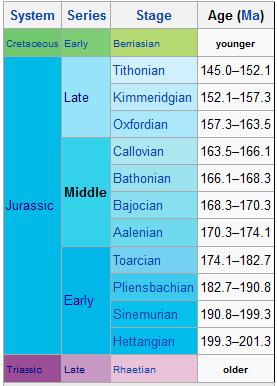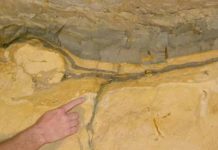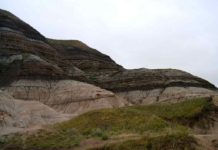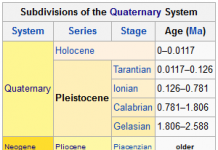
The Middle Jurassic is the second epoch of the Jurassic Period. It lasted from 176 to 161 million years ago. In European lithostratigraphy, rocks of this Middle Jurassic age are called the Dogger. This name in the past was also used to indicate the Middle Jurassic epoch itself, but is discouraged by the IUGS, to distinguish between rock units and units of geological time.
Paleogeography
Life forms of the epoch
Marine life
During this time, marine life (including ammonites and bivalves) flourished. Ichthyosaurs, although common, are reduced in diversity; while the top marine predators, the pliosaurs, grew to the size of killer whales and larger (e.g. Pliosaurus, Liopleurodon). Plesiosaurs became common at this time, and metriorhynchid crocodilians first appeared.
Terrestrial life
New types of dinosaurs evolved on land (including cetiosaurs, brachiosaurs, megalosaurs and hypsilophodonts).
Descendants of the therapsids, the cynodonts were still flourishing along with the dinosaurs even though they were shrew-sized; none exceeded the size of a badger. A group of cynodonts, the trithelodonts were becoming rare and eventually became extinct at the end of this epoch. The Tritylodonts were still common though. Mammaliformes, who evolved from a group of cynodonts were also rare and less significant at this time. It was at this epoch that the “true” mammals evolved.
Flora
Conifers were dominant in the Middle Jurassic. Other plants, such as ginkgoes, cycads, and ferns were also common.
Note : The above story is based on materials provided by Wikipedia










